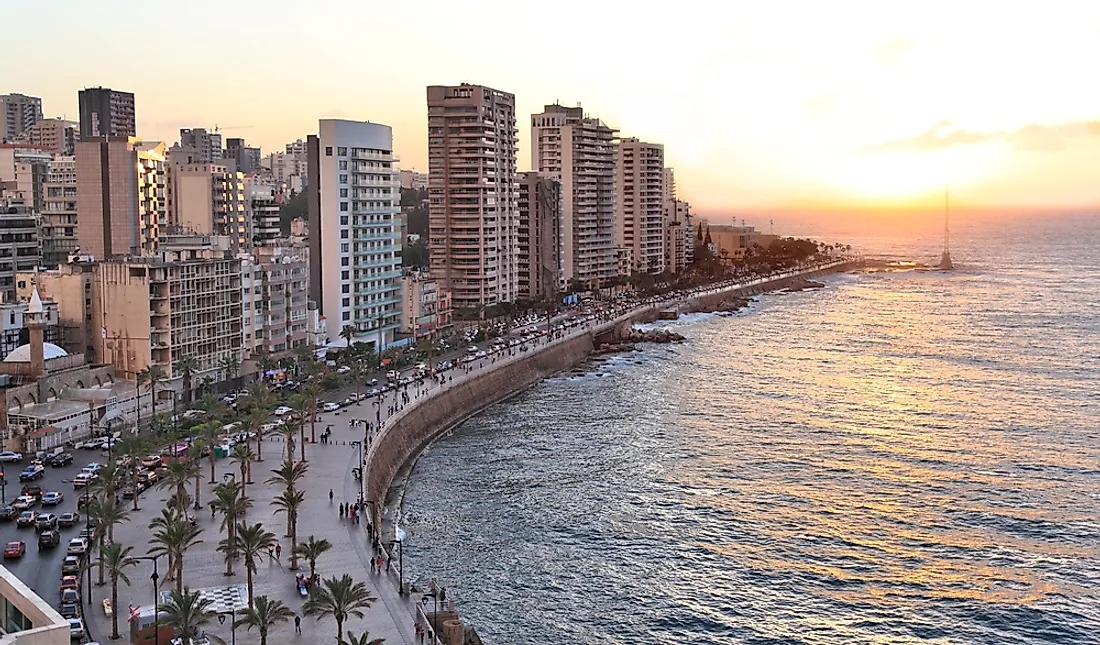What Is The Capital Of Lebanon?

Beirut is the capital city of Lebanon. Beirut is situated on the peninsula in the middle of the Mediterranean coast of Lebanon. Beirut is the oldest city in Lebanon which was inhabited since over 5,000 years ago. With a population of over 1 million as of 2007, Beirut is the largest city in Lebanon and the home to the national government of Lebanon. The capital plays a significant role in the economy of the country, especially with all the major corporations and banks based in the city’s central business district.
Development of Beirut
The name ‘’Beirut’’ was derived from a Canaanite-Phoenician ‘’Be’erot’’ which means an underground water source which the locals still tap and use for their general purposes. Other people believe that the city is named after ‘’Beroe’’ the daughter of Aphrodite and Adonis. The first historical reference of Beirut dates back to 14th century when Beirut was mentioned in the tablets of the Amarna letters plus three letters sent to the Pharaoh from Ammunira of Biruta the present day Beirut. The city was later destroyed and rebuild in 140 BCE in a Hellenistic plan and then renamed Laodicea-in-Phoenicia.
Syria, together with Lebanon, was conquered and ruled by Ottoman sultan Selim-I, and with the help of Damascus, Beirut ended up becoming the primary trading center in Syria. By the mid 19th century, Beirut had developed strong political and commercial ties with numerous European powers, especially France, and their interest in silk from Lebanon among other exports made the city a major industrial center and port. By 1888, Beirut was made the capital of Vilayet, Syria and it was already a cosmopolitan city. After the Ottoman Empire collapsed, Lebanon became part of the French colony, after World War 1. Beirut officially became the capital city of Lebanon in 1943 when the country gained their independence.
Population of Beirut
Beirut is the most religiously diverse and most cosmopolitan city in the Middle East. The population of Greater Beirut is estimated to be as high as 2,012,000. Beirut has significant Muslim and Christian communities. After the civil war ended the Copts became a recognized religion thus bringing the total numbers of religions in Beirut to eighteen. The original 17 recognized religions include 12 Christian sects including Orthodox, Greek Catholics, Syriac, and the Assyrians among others and four Muslim sects including Druze, Alawi, Shi’a, and Sunni.
Beirut's Main Economic Boosters
The economy of Beirut is a service-oriented economy with main industries being tourism and banking. With the city’s airport and seaport plus the free foreign exchange system, favorable loan interest rates, and banking-secrecy laws, Beirut became the central banking city for the Arab wealth. The economy of this city is diverse, and it includes trade, banking, and publishing industries among others. The focal point of the country’s economy is Beirut.
Tourist Attractions In Beirut
Beirut is an old city which has evolved, and the architecture of Beirut is a perfect blend of Venetian Gothic Architecture and French architecture with an ideal mix of Ottoman and Arabesque. The city hosts some of the most historical buildings in the country including ruins from the Roman era which tourists enjoy. Another tourist destination is the Corniche-Beirut, a famous promenade which encircles the seafront. Gemmayzeh is also another artistic Bohemian-region with historic buildings from the French period.











